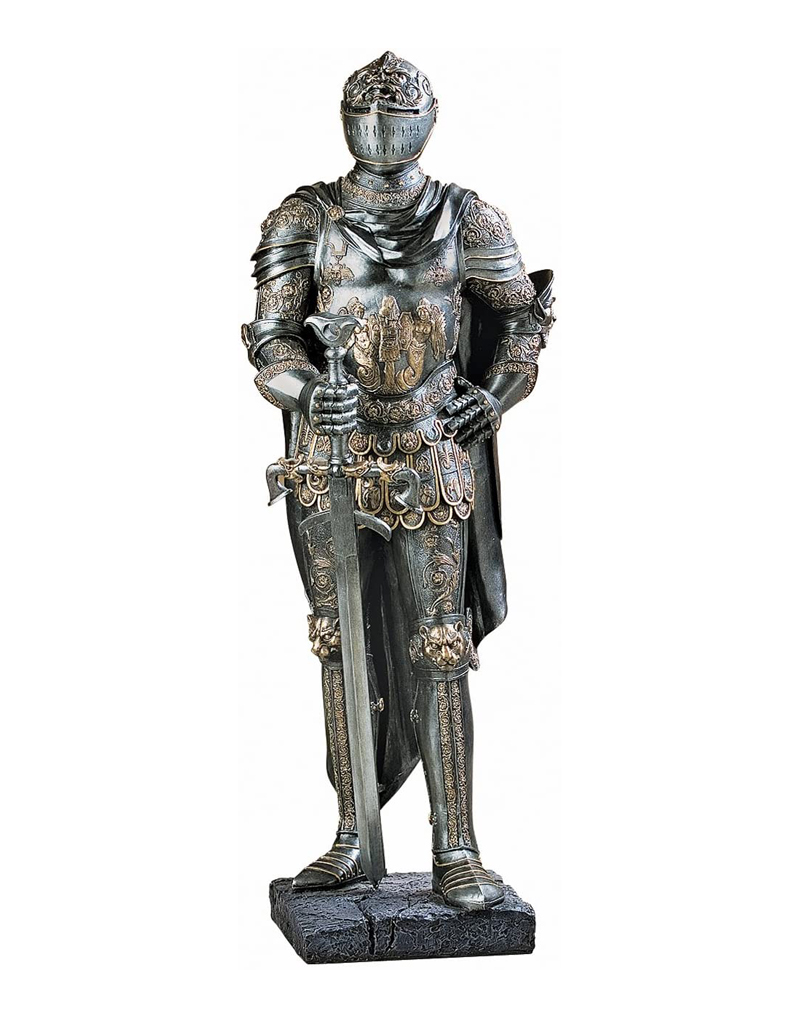King’s Medieval Guard Gothic Knight Armor Statue
Gothic Knight Armor Statue, hand-cast using real crushed stone bonded with high quality designer resin, each piece is individually hand-painted by the artisans. At more than a yard tall, this incredibly detailed, museum replica knight is a true statement piece! Quality designer resin museum replica is clad in 16th century style Italian armor, proudly displaying his sword and a chestplate emblazoned with intricately sculpted lions. Features a two-tone metallic finish. Castle guard, in the European feudal tenure, an arrangement by which some tenants of the king or of a lesser lord were bound to provide garrisons for royal or other castles. The obligation would in practice be discharged by subtenants, individual knights who held their fiefs by virtue of performing such service for a fixed period each year. Because the castle concerned might be far from the fiefs charged to guard it, the duty was early commuted for money payments. Some castle guards, or ward rents, survived into modern times.
Knight service, in the European feudal system, military duties performed in return for tenures of land. The military service might be required for wars or expeditions or merely for riding and escorting services or guarding the castle. To obtain such service, a lord could either enfeoff (grant a fief to) one man for direct and personal service or enfeoff someone who would bring with him other knights. The number of knights supplied usually bore some relation to the size of the fief. Originally services and equipment were supplied at the vassal’s expense. The normal period of service was 40 days a year. In England knight service was held due to the king only. In France, however, the lesser nobility as well could claim such service and thus were able to achieve great personal power. As time went on, variations developed. From the mid 12th century fewer knights were being summoned, but they often were serving for longer than 40 days; sometimes service due was rendered in scutage, a tax paid in lieu of service. By 1300 the decline in the importance of cavalry, the increasing use of mercenaries, and the resistance of tenants had combined to reduce substantially the number of knights summoned from any fief. King’s Medieval Guard Gothic Knight Armor Statue measures: 10.5 inches / 26 cm x 13.5 inches / 34 cm x 39.5 inches / 1 m.
Gothic Knight Armor Statue on Amazon.
Gothic Knight Armor Statue on eBay.
Medieval Statues and Gothic Statues.



